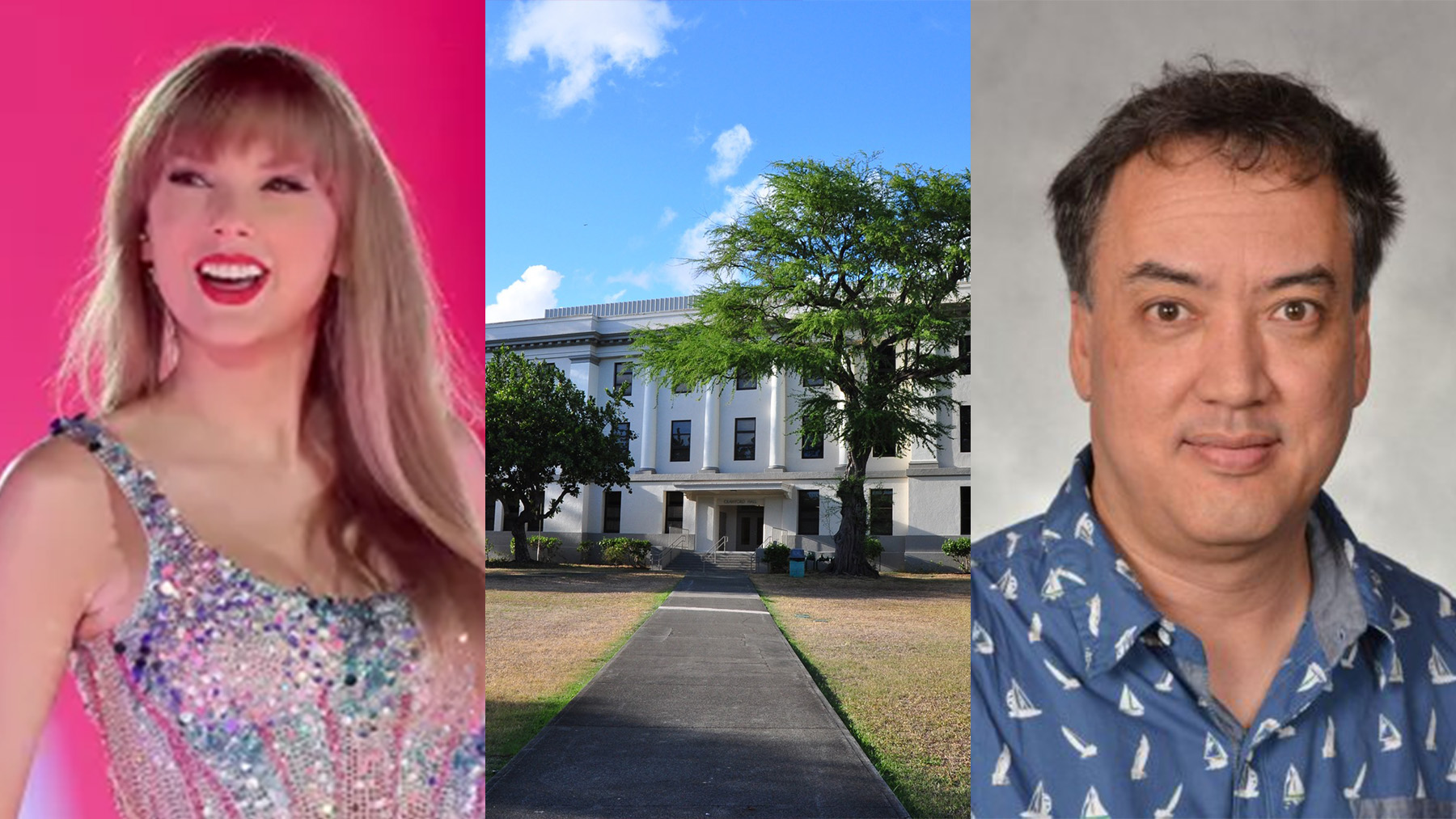UH Professor Sees Lessons in Taylor Swift Deepfake Scandal
In an essay penned for the University of Hawaii communications office, communications professor Wayne Buente—who specializes in social media—weighed in on the recent flood of deepfake explicit images of superstar Taylor Swift.
The deepfake scandal comes as Swift had already been dominating the news for her worldwide Eras Tour, her support for her new boyfriend Travis Kelce of the Kansas City Chiefs, and—locally—the surprising fact that her father once played football for the University of Hawaii.
“These AI tools with image generation are still kind of a wild west,” said UH Mānoa Communication Program Professor Wayne Buente, who specializes in social media. “This is one of the classic situations where the technology is moving far faster than the law and policy.”
The deepfakes of the singer songwriter logged more than 47 million views in less than 24 hours before the Twitter account was suspended and the ability to search for Taylor Swift was briefly suspended.
As AI improves, Buente says, the ability to discern what’s true or false will get even more difficult.
“In the end, the responsibility is really going to fall on the end user to kind of do their homework about the content that they’re seeing, the sourcing of it and what we know about where this image is coming from,” Buente said.
The Swift images were created through free Microsoft software, according to Buente. Even though the use of AI to create an explicit image is prohibited by Microsoft, the user likely found ways around that limitation. He said once an image is posted on a social media site and begins to gain traction, algorithms take over and further amplify the content.
AI imaging could be used on everyday people
Buente also said what happened to Swift could happen to anyone.
“I hope that the understanding that AI image generation and deep fakes is a real serious concern now, not just for celebrities,” Buente said. “I’ve read stories where kids are taking photos of their peers and putting them through these tools to generate explicit pictures and that’s causing a lot of trauma in these situations.”
Buente said more needs to be done by all social media platforms, especially given the expected rise in deep fake videos and false narratives ahead of the 2024 presidential election.
“When we also think about bad actors that operate in our social media information landscape that are deliberately out there to put disinformation because they have particular interests in the outcome, it’s something that I’m really concerned about,” said Buente.
Educating our next generation
Buente teaches a variety of courses in the Communication Program related to social media and information and communications technology. In his social media courses, undergraduate and graduate students learn about algorithms, which lead to increased social media literacy.
Each year the amount of false information, hoaxes, conspiracy theories and more has grown. Being able to rationally understand the points, their origins and the motives behind sharing such misinformation has become increasingly more important with the trend.
The Communication Program is in the School of Communication and Information in the College of Social Sciences.

